Here’s How You Can Propagate Lilac Through Suckers, Cuttings Or Layering
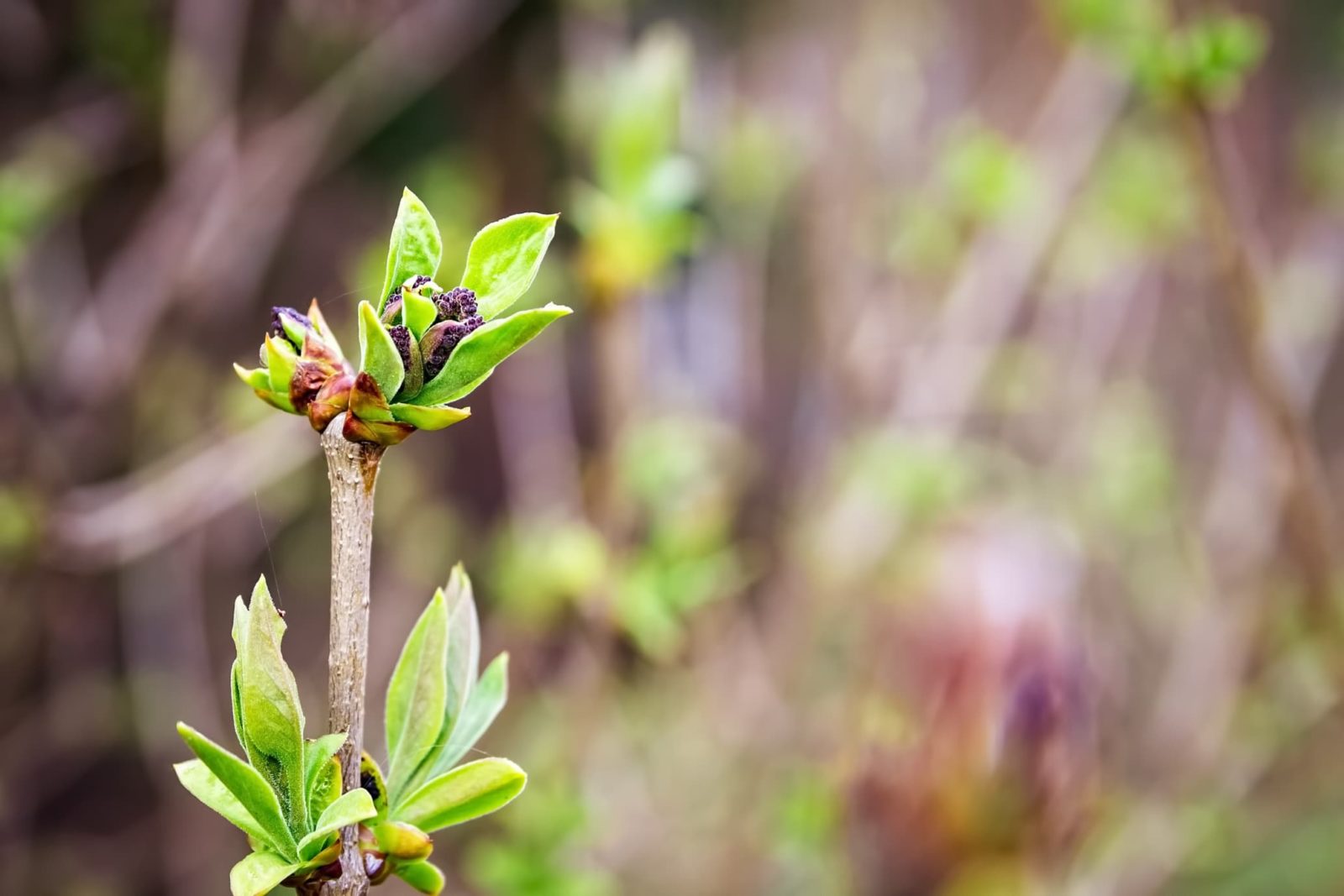

Elizabeth is a Permaculture Garden Designer, Sustainability Consultant and Professional Writer, working as an advocate for positive change. She graduated from the University of St. Andrews with an MA in English and Philosophy and obtained a Diploma in Applied Permaculture Design from the Permaculture Association.
Reviewed By COLIN SKELLY

Colin is a Horticulturist and Horticultural Consultant with experience in a range of practical and managerial roles across heritage, commercial and public horticulture. He holds the Royal Horticultural Society’s Master of Horticulture award and has a particular interest in horticultural ecology and naturalistic planting for habitat and climate resilience.
IN THIS GUIDE
LILAC GUIDES
Container Growing
Deadheading
Planting
Propagation
Pruning
Lilac shrubs can often be a delightful choice for a garden.
There are lilacs that can grow into majestic specimens in larger gardens and some smaller and slower-growing varieties that do well in containers or small spaces.
If you have a lilac you love, you may well be interested in propagating your plant to obtain further shrubs for your space.
There are 3 main ways to propagate lilac:
- Through suckers
- Through softwood cuttings
- Through layering
The first of these options is not always possible but is by far the easiest option if it is.
However, both of the other options are also relatively simple and you do not need to be an experienced gardener to learn how to propagate a lilac shrub in your garden.
Read on to find out more about obtaining new lilac plants from an existing one in each of these ways.
| Difficulty | Easy / Medium |
| Equipment Required | Secateurs and a spade |
1) Propagating From Suckers
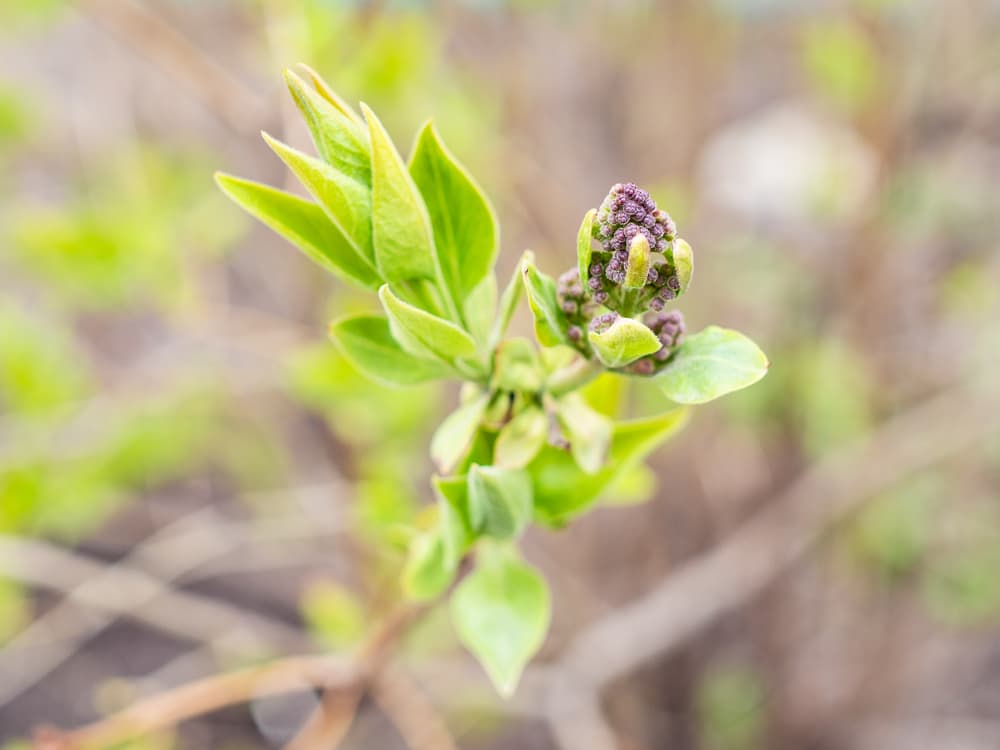
Many lilacs will freely produce suckers (young plants) around the base of an existing shrub.
Where suckers are produced, you can simply dig up these young shoots that emerge around the base with some roots still attached, then replant these elsewhere in your garden.
This is by far the easiest way to produce new lilac plants, but not all lilacs will produce suckers.
If your lilac has not freely suckered, you will have to try one of the methods below if you would like to propagate your existing shrub.
2) Propagating From Cuttings
Softwood cuttings are taken between March and August.
They are cuttings taken from the current season’s growth and can often take root and grow into new plants relatively rapidly.
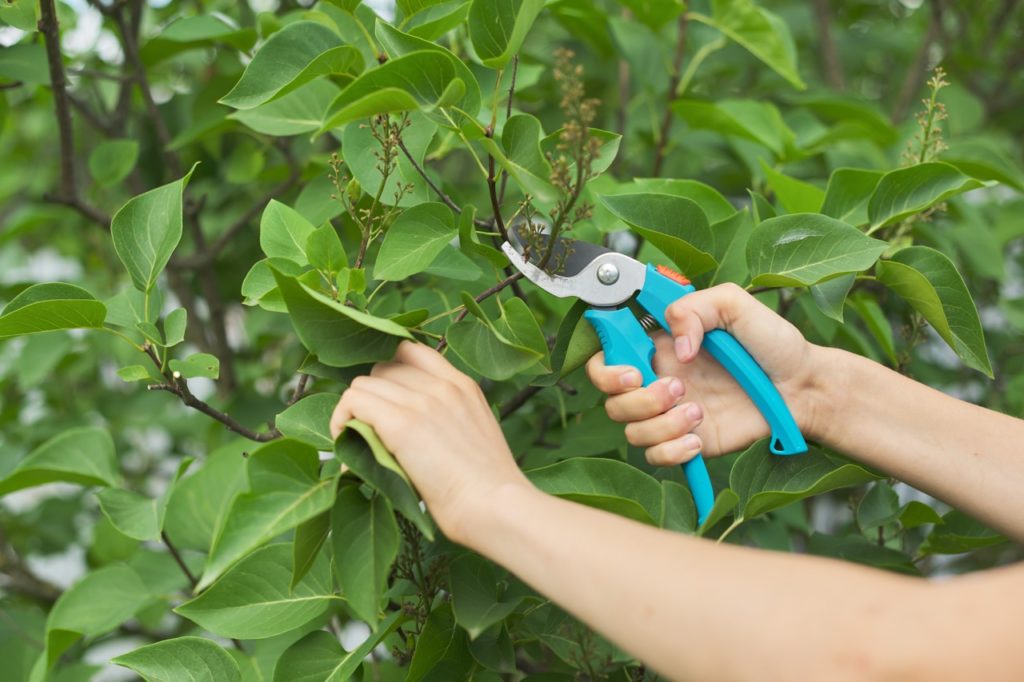
To propagate lilac from softwood cuttings:
- Remove fresh shoots from the lilac shrub, cutting just above a leaf on the parent lilac plant.
- Cut just below a leaf node to leave a cutting around 10cm long and remove the leaves from the bottom half.
- If the leaves are on the larger side, cut each remaining leaf in half to reduce their surface area. This minimises water loss from the cutting.
- Dip the end of the cutting in hormone rooting powder to increase chances of successful rooting if you wish.
- Place the cuttings around the edges of 7cm pots of moist cuttings compost so that the lowest leaves are just above the surface of the growing medium.
- Cover the cuttings to retain moisture and place them in a warm position out of direct sunshine to root.
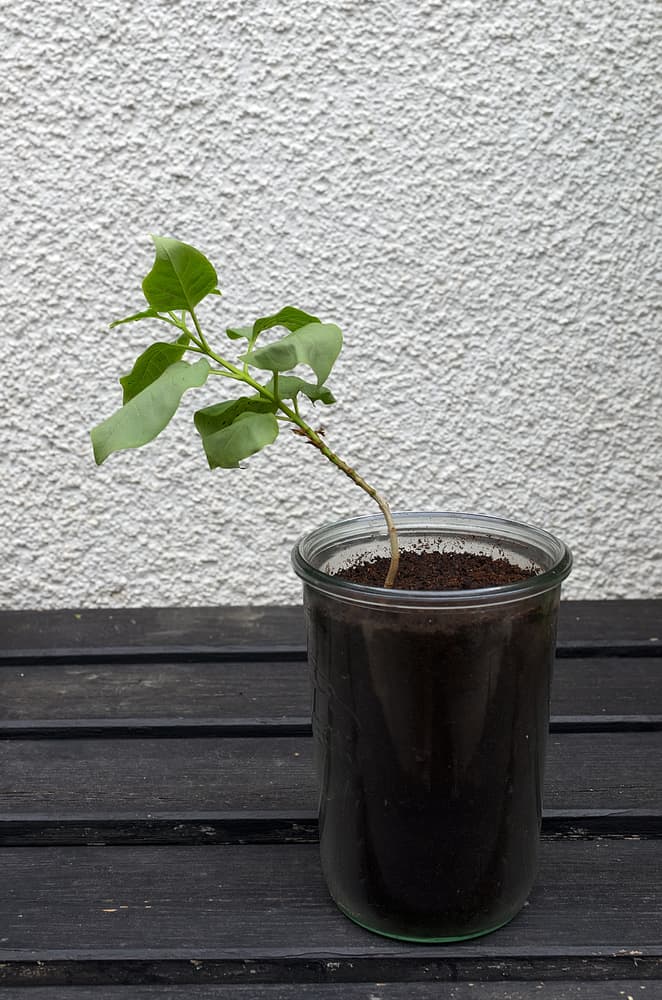
3) Propagating Through Layering
The other option is to propagate a lilac shrub by layering.
This involves gently wounding a branch and bending this down so that it comes into contact with the soil.
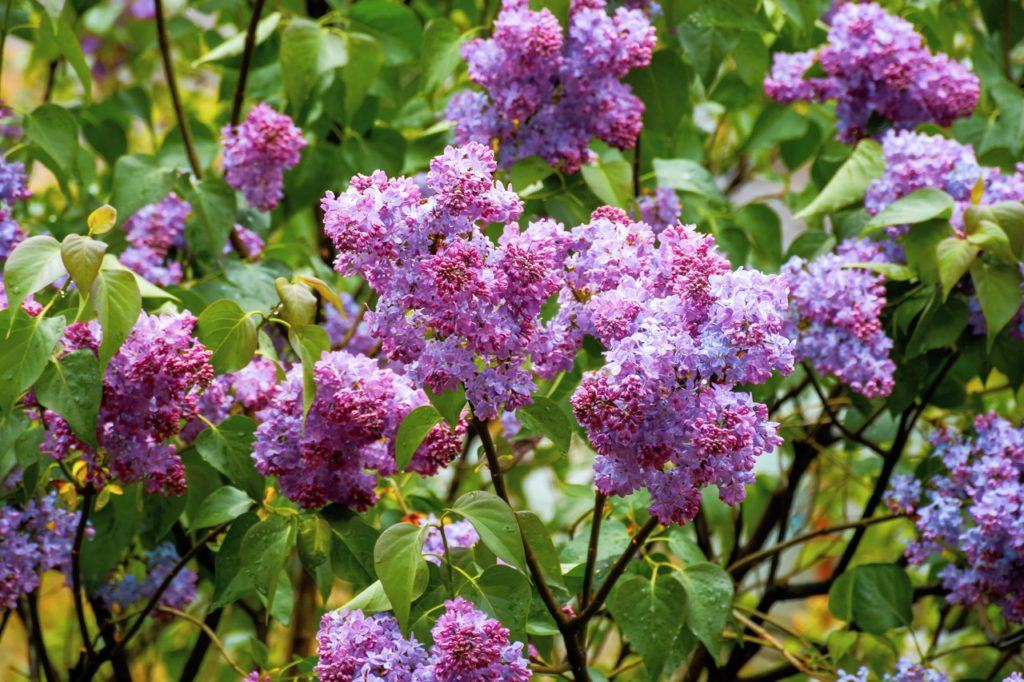
This branch can be pegged down to hold it in place and should eventually root where the stem is buried in the soil.
“When layering, I try to peg down 3-5 pliable branches at about pencil width to make sure that at least one or two will take,” shares Horticultural Consultant Colin Skelly.
“I find that a tent peg is perfect for holding the branches down and I leave it in place for at least 6-12 months until well-rooted.”
To improve the chances of success, where you have wounded the stem, you can apply some rooting hormone, though this is not essential.
You should make sure that the area is watered well during dry spells since the soil should not be allowed to dry out entirely.
However, you should also make sure that the area does not become waterlogged and excess water can drain away freely.
The layered stem should have rooted within a year or so, and once it has rooted successfully, it can be severed from the parent place and moved elsewhere as an independent plant.
